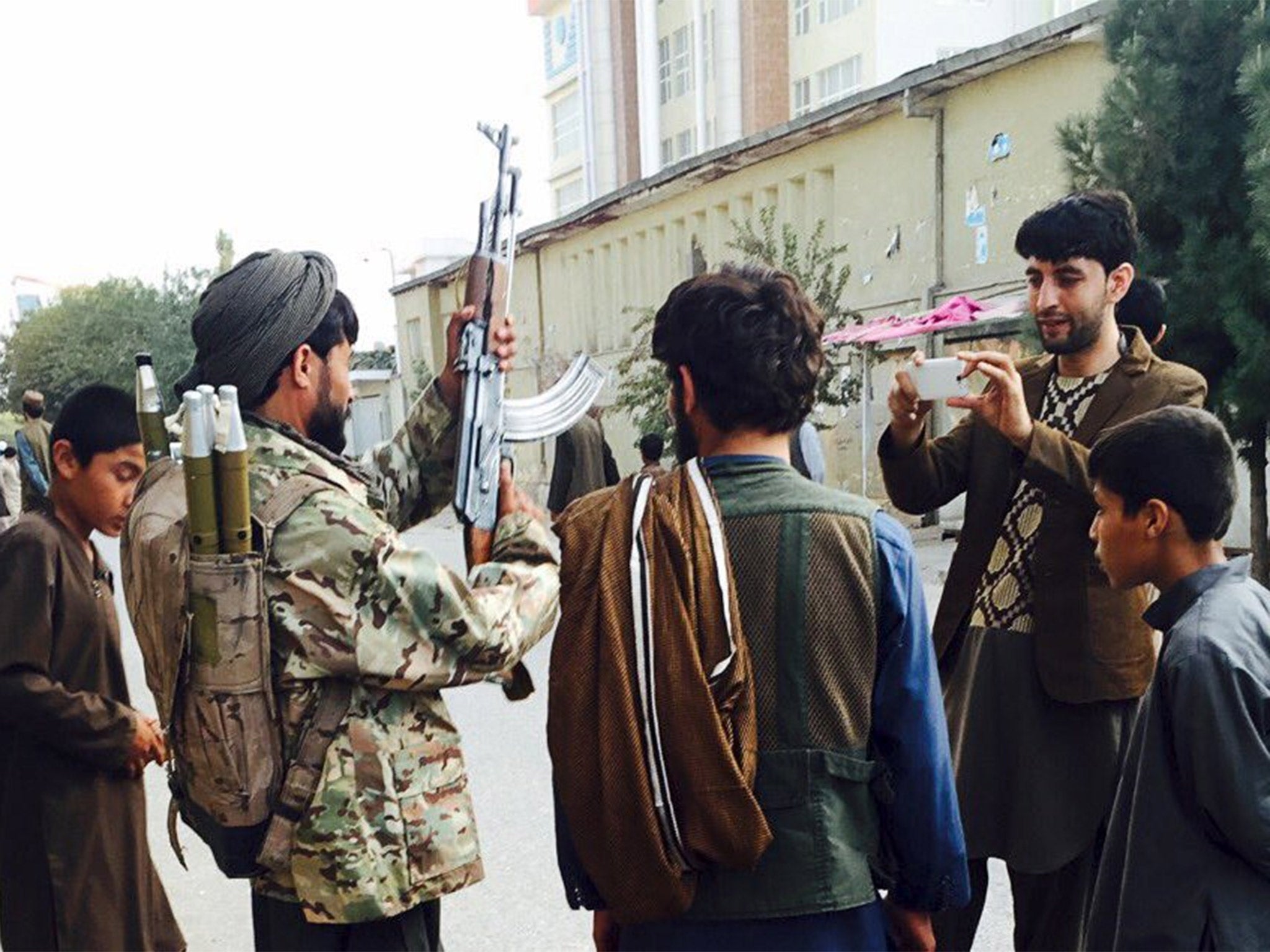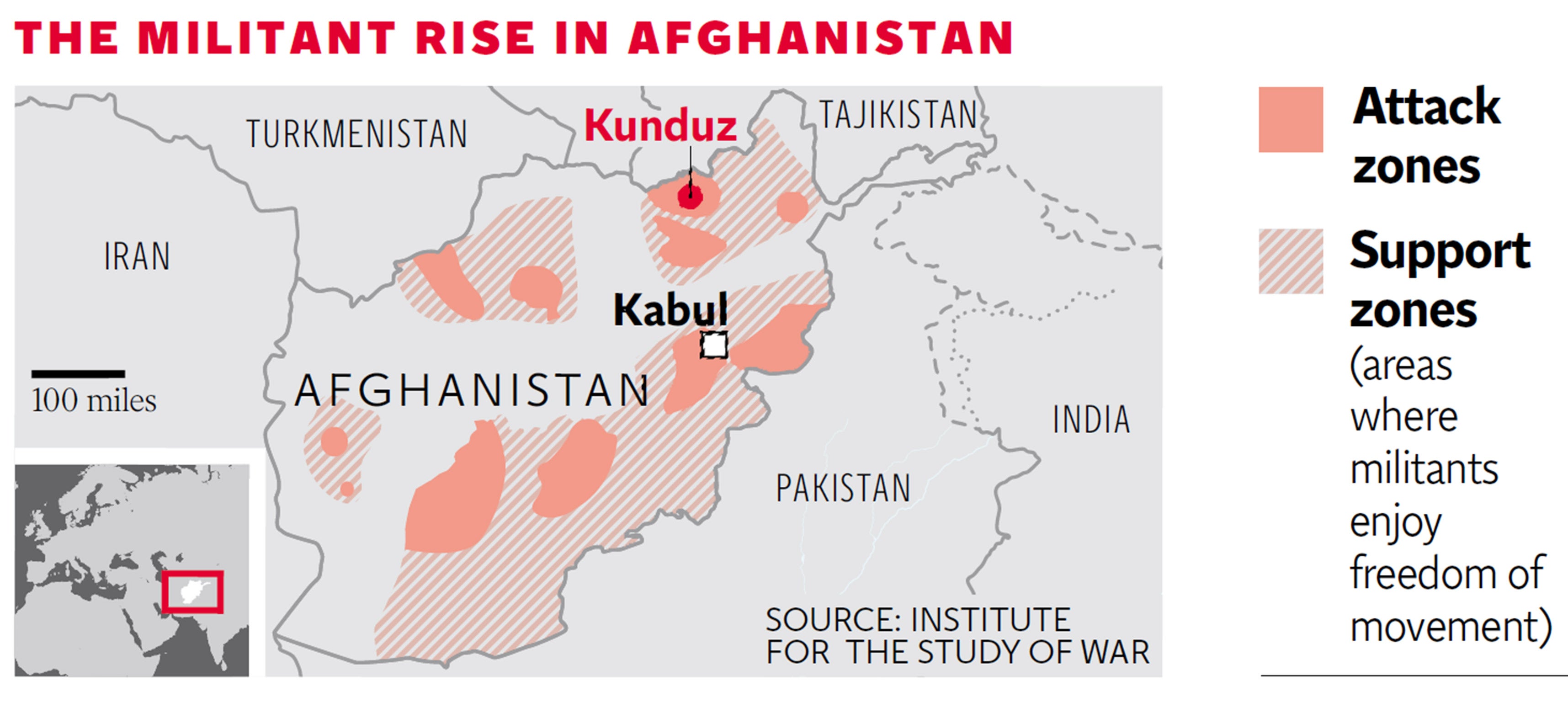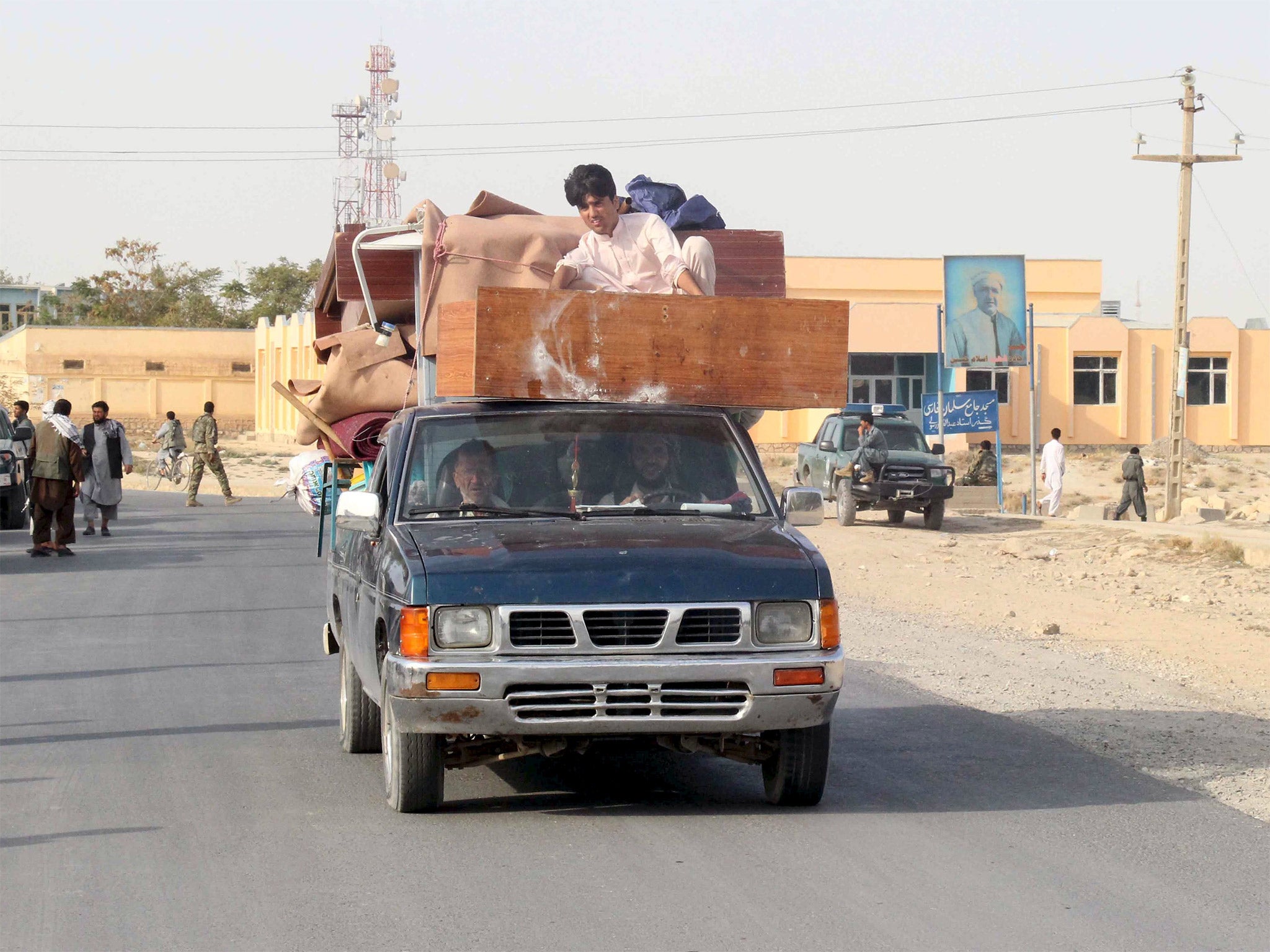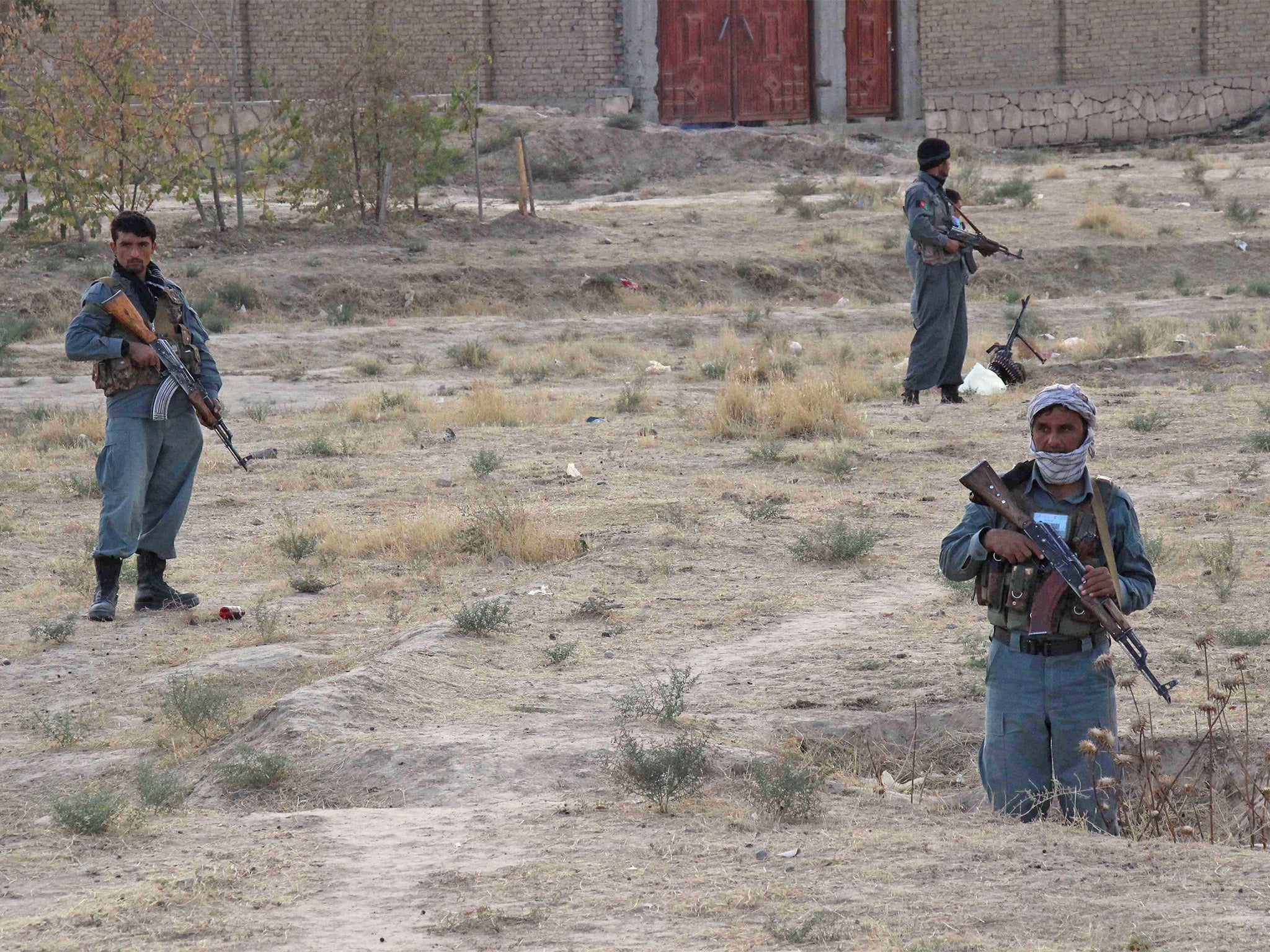Taliban in Kunduz: What life is like for residents in the Afghan city as extremist's return to power
Citizens rounded up, bullets flying and the elecricity supply cut off in Afghanistan's fifth largest city under Islamists' new regime

Your support helps us to tell the story
From reproductive rights to climate change to Big Tech, The Independent is on the ground when the story is developing. Whether it's investigating the financials of Elon Musk's pro-Trump PAC or producing our latest documentary, 'The A Word', which shines a light on the American women fighting for reproductive rights, we know how important it is to parse out the facts from the messaging.
At such a critical moment in US history, we need reporters on the ground. Your donation allows us to keep sending journalists to speak to both sides of the story.
The Independent is trusted by Americans across the entire political spectrum. And unlike many other quality news outlets, we choose not to lock Americans out of our reporting and analysis with paywalls. We believe quality journalism should be available to everyone, paid for by those who can afford it.
Your support makes all the difference.Its ancient ramparts have stood on the hill above Kunduz for centuries, as the Afghan city’s protectors have come and gone – among them the Taliban, who took longer to dislodge from here than from any other city during the invasion of 2001.
Most recently, Bala Hisar fortress was the base for a unit of Afghan intelligence’s special forces, part of a larger garrison of troops in the country’s fifth largest city who were supposed to be safeguarding it from a return by the Taliban.
In that they failed. On Monday the Taliban swept back into Kunduz, any government forces in the city rapidly melting away. On Wednesday, residents of the northern city reported that the stronghold itself had changed hands again. A column of armoured Humvees was spotted speeding towards the airport as the Islamist fighters who had briefly besieged Bala Hisar seized it back – gaining a vantage point that will greatly strengthen their grip upon the city.

There were reports that Taliban fighters had taken $8m (£5.3m) from the vaults of the Kunduz branch of the Afghan central bank, and millions more from the safes of commercial banks, driving off with their loot in some of the military and police vehicles they have seized.
Khan Afzal Hadawal first deputy head of the central bank told The Independent: "We took the cash out to the airport as the city was falling. We took US$9 million and 132 million Afghanis ($2,058,645) . We did leave some money but those are old bank notes close to 32 million Afghanis.”
At least 150 captured armoured Humvees are now in their hands, as well as stockpiles of weapons including heavy machine guns, AK-47s, grenades and mortars – making the city potentially the Afghan equivalent of Mosul, the Iraqi city which became an Isis stronghold after its supposed defenders, backed by the West, fled Isis, leaving great quantities of military hardware behind.

An MP for the city, Fatima Aziz, who was in Kabul when the Taliban attacked, said: “Our people in Kunduz need bread, water and electricity. For 72 hours they have been without them. I call on the Taliban – now that you have taken the city, please don’t kill people. Don’t loot homes.”
Almost 14 years after the hardline Islamist group was ousted from power in the aftermath of the 11 September 2001 attacks, this week has shown that it is back – not just in the south of Afghanistan, where it never let up in its assaults on Western and Afghan army troops, but now in the north. Since Nato withdrew the last of its fighting troops last December, it has steadily grown in strength.
Residents of Kunduz are increasingly frantic, with most too frightened of their new Taliban rulers to give their names. Hundreds of people have been fleeing the Dawra Hill area of the city, the suburb that has become the frontline of fighting between the Taliban and the two brigades of Afghan forces – one army, the other police – who remained at the airport.
One resident said the Taliban had set up small units or “commissions” for searching homes. “They have a list of names of government officials and militia commanders who they’re looking for,” he said. “They are also searching for weapons. I saw them take 15 men from their homes, and drive them away on the back of pick-up trucks.”
A 59-year-old woman in an outlying village described how the cow on which her family depended had been killed and her two grandchildren badly injured by an incoming rocket – who had fired it, she did not know. In central Kunduz, people emerged from their homes to carry injured family members on their backs to the city’s main hospital, now under Taliban control, in a desperate search for help.

Pharmacies and bakeries are shut and the price of bread has tripled. Meanwhile, faced with the eerie sight of deserted streets and marketplaces, a shopkeeper said: “The Taliban are asking on loudspeakers that we should reopen shops. But bullets are flying all over. Nobody wants to reopen their shops.”
Electricity has been cut off, local television stations have shut down and four local radio stations run and owned by women, set up with the help of foreign aid agencies, have been warned by the Taliban to end all their broadcasting. The female journalists have fled.
Angry Afghan MPs have summoned the country’s head of intelligence to ask why a force several thousand-strong, based three miles from central Kunduz at the airport, had been apparently unable – or, more worryingly, unwilling – to protect the city from a smaller Taliban force.
Umer Daudzai, who was Interior Minister under the former President, Hamid Karzai, told The Independent: “Kunduz fell not because the Taliban have grown excessively strong, but because the Afghan National Security Force [ANSF] is ineffectively led – and capable commanders are undermined by new parallel structures or excessive centralisation. This negatively impacts morale as well as command effectiveness.
“The truth is the transition of security responsibility from international forces to the ANSF was rushed. It was more political, and done with disregard for the need to develop ANSF strategic abilities.”
A former head of the Afghan intelligence, Amrullah Saleh, who served under Mr Karzai and for the first months of President Ashraf Ghani’s administration, said the scale and effectiveness of the Taliban attack on Kunduz was proof of Pakistani support for the insurgents. “A Tet-style offensive is beyond the capacity of village mullahs to plan and execute. This offensive is the work of years of training that the Pakistan army has been giving to adversaries of US and Afghanistan, the Taliban. Will the US and the world keep ignoring this?”
Join our commenting forum
Join thought-provoking conversations, follow other Independent readers and see their replies
Comments